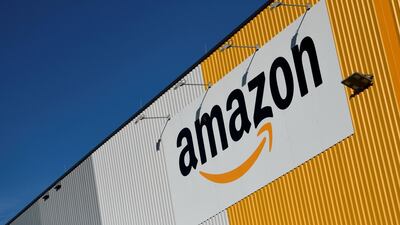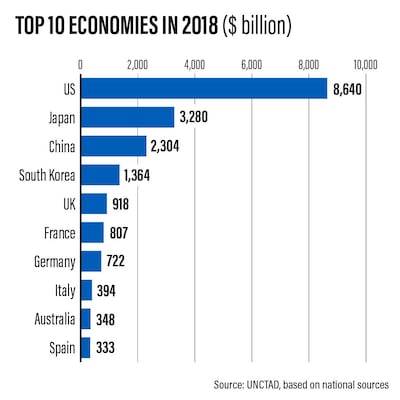Global e-commerce sales grew to $25.6 trillion (Dh94tn) in 2018, up 8 per cent on the previous year, according to a new estimate by the UN’s trade and development body.
Total e-commerce sales, which include business-to-business (B2B) and business-to-consumer (B2C) sales, were equivalent to 30 per cent of global gross domestic product during the year, the United Nations Conference on Trade and Development (UNCTAD) said on Monday.
“The coronavirus crisis has accelerated the uptake of digital solutions, tools and services, but the overall impact on the value of e-commerce in 2020 is still hard to predict,” said Shamika Sirimanne, UNCTAD’s director of technology and logistics.
The value of global B2B e-commerce in 2018 was $21tn, representing 83 per cent of all e-commerce, while B2C e-commerce was valued at $4.4tn, up 16 per cent from 2017. Cross-border B2C e-commerce sales amounted to $404 billion in 2018, an increase of 7 per cent over 2017.
The United States is the top e-commerce market with total sales valued at $8.6tn, followed by Japan at $3.2tn and China at $2.3tn, the data from the report shows.
The world’s top 10 B2C e-commerce companies, which are mostly based in China and the US, generated almost $2tn in gross merchandise value (GMV) in 2018.
Alibaba was by far the biggest with GMV of $866bn in 2018, followed by Amazon with $277bn. However, in terms of revenue, China's JD.com and Amazon were ahead of Alibaba, according to the report.
UNCTAD estimates that 1.45 billion people, or one-quarter of the world’s population aged 15 and older, made purchases online in 2018, which is 9 per cent higher than in 2017.
China had the largest number of online shoppers at 610 million. While the bulk of online shoppers mainly bought from domestic suppliers, some 330 million online shoppers made cross-border purchases in 2018 — a little more than one in five of all online shoppers.
Interest in buying from foreign suppliers also continued to grow, according to the report.
“Still, the number of online shoppers, while huge, is an indication of the scale of the digital divide and the future market potential of e-commerce, both of which need to be addressed,” Ms Sirimanne added.
Developing and transition economies accounted for about half of the top 20 economies by B2C e-commerce sales.
The countries with the highest portion of B2C e-commerce sales to gross domestic product were Hong Kong, China and the United Kingdom, and those with the smallest were India, Brazil and Russia.
“Today, only half of the world’s 7.7 billion people are connected to the internet and its benefits. This limits the ability of many developing countries to use digital solutions to cope with the current health and economic crisis,” UNCTAD said.
The report was released at the beginning of UNCTAD's eWeek event from April 27 to May 1. The online event explores digital solutions and policies to help the world recover from the coronavirus crisis.



